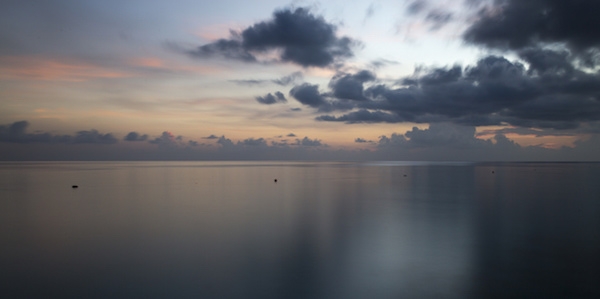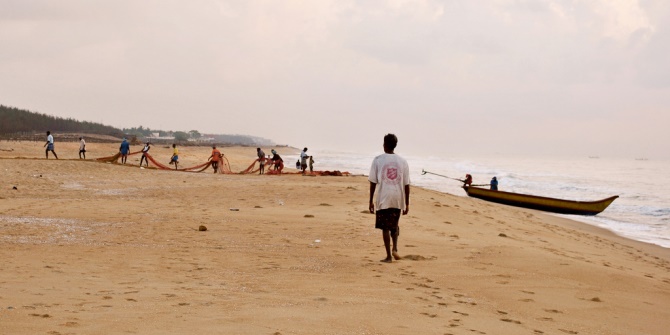 As India and China continue to vie for supremacy of the highly geopolitically prized Indian Ocean, Shantanu Roy-Chaudhury focuses on the roles of Bangladesh, Myanmar and Maldives and their strategic importance for both states.
As India and China continue to vie for supremacy of the highly geopolitically prized Indian Ocean, Shantanu Roy-Chaudhury focuses on the roles of Bangladesh, Myanmar and Maldives and their strategic importance for both states.
The world is increasingly understanding the strategic aspect of maritime power in the present day. The Indian Ocean is a growing region of competition and rivalry, with the two main contenders – India and China, having significant stakes in the region. While India views the Indian ocean as a part of its neighbourhood, increasing Chinese presence in its ‘backyard’ has caused alarm in recent times. This has led to the emergence of a maritime great game between these two Asian powers. As a result, both countries are heavily investing to increase their naval capabilities and out-manoeuvre each other strategically. From China’s side, the government adopted a “string of pearls” strategy to encircle India. This comprised of establishing a series of ports in countries surrounding India as Beijing has done in Gwadar in Pakistan and Hambantota in Sri Lanka along with projects in Myanmar and Bangladesh.
One of the main facets of the direct rivalry between India and China is the striving for influence in the island and littoral states of the Indian ocean. This article will lay out the Chinese expansions in Sri Lanka, Bangladesh, Myanmar, and the Maldives as a part of the string of pearls strategy.
Bangladesh
Similar to Gwadar and the port projects in Sri Lanka, China has also invested in significant developments in both Bangladesh and Myanmar. Bangladesh historically was always seen under India’s sphere of influence and as its partner. However, with China showing keen interest in the Bangladesh, views on India and China polarised domestic politics in Bangladesh. Memories of China siding with Pakistan during the Bangladesh war of liberation are to some extent forgotten, as the Bangladesh Navy accepted two Chinese submarines in 2017; a decision that made India uncomfortable.
China has now become the largest arms dealer and trading partner of Bangladesh and is heavily invested in developing infrastructure, mainly bridges and highways. The ports in Bangladesh are also lucrative for China as they not only contribute to the string of pearls strategy to encircle India, but they are also seen as an alternative route to China’s dependence on the Straits of Malacca which the Chinese have fear of through the ‘Malacca dilemma’. China has therefore been instrumental in upgrading the Chittagong Port and is developing a 750-acre industrial park in the city which will largely be used by Chinese manufacturing firms. China has not been able to make the kind of headway into Bangladesh as it has into Pakistan and Sri Lanka as they have suffered setbacks which included plans for the construction of a deep-sea port at Sonadia being shelved due to external pressures. However, they are playing the long game through these developmental projects and by placating both the Awami League and the pro-army BNP.
Myanmar
Another important strategic aspect of the BRI and string of pearls is Myanmar, where China is their top trading partner and has emerged as the single largest source of FDI into the country. China has successfully linked its Yunnan Province with the country through an oil pipeline and the militaries of the two countries have drawn closer. China’s CITIC Group Corporation also won two contracts which allow building of a deep sea port on the Bay of Bengal – which directly relates to the string of pearls strategy. The Chinese will also build an industrial area in western Myanmar’s Rakhine State. From 2009 however, Chinese attempts to expand into Myanmar have not been smooth as opposition to Chinese construction projects arose under the civilian government of Thein Sein. This led to the suspension of the Chinese backed Myitsone Dam in 2011. China has had increasing competition from both India and Japan in Myanmar and like their inroads in Bangladesh, their successes in bringing the two countries under their Belt and Road Initiative and fortifying their string of pearls has been limited.

The Maldives at sunset. Photo credit: Benjamin Griffiths, Flickr, CC BY-NC 2.0.
The Maldives
Maldives is another island state which has historically been under the Indian sphere of influence but has recently seen a growing Chinese footprint slowly eroding India’s primacy. China has invested millions of dollars into an airport expansion, housing development, and numerous other projects in the country. The Indian government was also taken by surprise when China entered a free-trade agreement with them in 2017. Additionally, China has also leased an uninhabited island (Feydhoo Finolhu) for 50 years for tourism.
The China-Pakistan axis and their ‘all weather friendship’ is also a worrying factor for India. China is building a port in Gwadar in Pakistan, which directly plays in to encircling India. In 2017 China also inaugurated its first overseas military base in Djibouti which lies on the Bab el-Mandeb Strait, an important global shipping lane which leads to the Suez Canal, and on the northwest end of the Indian Ocean. Myanmar and Bangladesh also have ports which are being developed by China. Although the Chinese portray these development projects as purely for trade reasons, there are strong indications that they want to convert these trade outposts to military outposts, which was seen with the emergence of a Chinese submarine in Sri Lanka, and warships docking in Maldives, both incidents serving as an alarming security concern for India.
Counterbalances
Historically, smaller South Asian states have been apprehensive of India’s hegemonic tendencies in the region. With the renewed focus of China on the region, many of them are looking to balance India by drawing closer to China. Although India cannot compete financially with China to develop projects overseas, the competition is not completely one-sided in favour of China in spite of what the above examples may indicate. Being the regional power, India still has a large role in the Indian Ocean. Chinese investments in various countries have also left the host countries in serious debt. The Chinese have used this to their advantage to increase influence. States slowly realise the dangers of falling into this debt trap and may become increasingly wary of China as more time passes. The increasing Chinese presence has also left locals feeling their country is being sold. The Chinese business model, although prosperous for China, may backfire and hinder Chinese development projects. The Indian Ocean, although vast, does have choke points and China currently has no other alternative but to go through the extremely narrow strait of Malacca to enter the Indian Ocean.
If the current state of affairs continues, China will look to expand its influence via smaller, but strategically highly valuable South Asian states, with India scrambling to play a balancing act. To do so, India has been exploring options to balance China in the region. Analysts in India believe that one way to do this would be through closer alignment with the United States and Japan, who also want to keep a check on China’s rise. Similarly, strengthening relations through regional partnerships and regional balancing lead to the Modi governments unveiling the ‘neighbourhood first’ policy in 2014, which has focused on reaching out to the neighbouring countries to develop partnerships across the region. The South Asian region is currently one of the least economically integrated regions in the world, and if India takes the lead to change that, Bangladesh, Myanmar, and the Maldives may not have to look at an extra regional power to fill in the gaps. Apart from a wider view of balancing China, the Indian government should equally approach this country by country, focusing on areas where ties can be strengthened.
This article gives the views of the author, and not the position of the South Asia @ LSE blog, nor of the London School of Economics. Please read our comments policy before posting.
About the Author
 Shantanu Roy-Chaudhury is currently pursuing an MPhil in Modern South Asian Studies at St. Antony’s College, University of Oxford. He can be reached at shantanu.roychaudhury@sant.ox.ac.uk
Shantanu Roy-Chaudhury is currently pursuing an MPhil in Modern South Asian Studies at St. Antony’s College, University of Oxford. He can be reached at shantanu.roychaudhury@sant.ox.ac.uk







